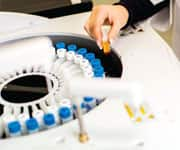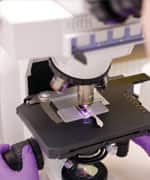Life Extension Magazine®

Preamble by William Faloon
Aubrey de Grey is the world’s most famous biomedical gerontologist. Life Extension Foundation® is honored he has joined our Scientific Advisory Board.
There is something so unique about Aubrey that I felt compelled to bring it up in this introduction. Aubrey has spent his life investigating methods to slow and reverse aging, which is not a financially lucrative activity.
Aubrey’s mother died and left him $16 million. Instead of doing what virtually anyone else would with this money, Aubrey donated $13 million to an organization dedicated to eradicating human aging.
Other than Saul Kent and me, who have donated our worldly assets to funding research to eliminate the scourges of aging and death, Aubrey is quite unique. He could have secured a comfortable lifestyle for himself, but recognized the greater good to humanity once aging is conquered.
On February 20, 2013, the founders of Google and Facebook joined forces to back big money prizes for research aimed at extending human life. There are other multi-billionaires supporting biomedical research, but none will make personal lifestyle sacrifices as Aubrey, Saul, and I have done.
There are many wealthy Life Extension members who will read this article. I ask that if their net worth ensures they will never endure personal economic hardship, that they consider donating money to non-profit organizations (like the Life Extension Foundation® and the one Aubrey established) that are funding dozens of scientific projects aimed at radically extending the healthy human life span.

Aubrey de Grey is the champion of a major issue that may be the least polarizing topic among the general public: not dying.
Regardless of your race, your religion, your political affiliation or your gender, most people can generally agree on the fact that living a healthy life for a long time is far better than getting sick and dying at a needlessly young age. For de Grey, increasing the human life span beyond what is now capable isn’t just something he thinks about in his free time; it is the singular focus of his professional life.
Officially, de Grey is a biomedical gerontologist and the Chief Science Officer of the SENS Foundation, which de Grey launched in March, 2009. Its purpose is best explained on the foundation’s website:
“SENS is an acronym for ‘Strategies for Engineered Negligible Senescence.’ It is best defined as an integrated set of medical techniques designed to restore youthful molecular and cellular structure to aged tissues and organs. Essentially, this involves the application of regenerative medicine to the problem of age-related ill-health. However, regenerative medicine is usually thought of as encompassing a few specific technologies such as stem cell therapy and tissue engineering, whereas SENS incorporates a variety of other techniques to remove or obviate the accumulating damage of aging. This broadly defined regenerative medicine - which includes the repair of living cells and extracellular material in situ - applied to the damages of aging, is what we refer to as rejuvenation biotechnologies.”
In short, the mission of SENS is to prevent people from getting sick. Ever. And de Grey has not only dedicated his life to achieving this goal, he has dedicated his wallet as well. When his mother passed away in 2011, he inherited over $16 million, of which he has donated $13 million to SENS; this is why he talks about ending sickness forever with such passion. He plans to make it happen.
In a speech de Grey gave at the world famous TedMed conference in 2009, he opens with a series of stats that treat aging as society normally treats disease or murder or drunk driving accidents. To start, he debunks the idea that dying of “natural causes” is a good or normal thing. In fact, in one of his first slides, he says the current definition of a “natural cause” death is anything that mainly kills older people. According to him, under the international classification of diseases, of the near 150,000 people who die per day worldwide, nearly two thirds of them die of aging.
“In the United States and the developed world, the proportion is over ninety percent,” he says in his presentation. “That’s thirty World Trade Center tragedies every day.”
But what also concerns de Grey is the quality of life of the aged in the last years of their existence.
“I’m very much in favor of being positive about all of the wonderful things that people accumulate in their lives as they age,” he says. “All the wisdom and experience and so on. But the fact is that we should not be downplaying or ignoring the fact that it would be much better if all those same people, with all of their experiences and wisdom also had the vigor and the physical and mental agility that they had as young adults. Currently, it’s not fun and it’s very expensive to keep the elderly going in the frail and decrepit state that a large proportion of elderly are in. The number I found was that it costs the government $200 billion a year to care for the elderly in the United States.”
To zero in on the serious nature of this issue, in the presentation, de Grey brings up the hypothetical question of whether or not aging is humanity’s worst problem. To hammer the point home, he answers the question with a question: Aging kills 100,000 people a day in the developed world. What else does that? The answer, of course, is nothing.
Attacking the Myths of Anti-Aging

“A lot of people when they think about the concept of combating aging, they think about the idea of keeping people alive in that frail and undesirable, ill-health stage of life,” de Grey tells his audience. “But that’s not what we’re about. We’re about extending the healthy part of life. Many people choose to rationalize the idea that aging is inevitable because they don’t think there is anything they can do about it. But we’re getting to a point where it’s not as simple as that.”
In order to explain that statement, de Grey proposes his own definition of aging, which he states as metabolism causing ongoing ‘damage,’ followed by this damage eventually causing pathology, which, in his definition, is everything that goes on later in life. Essentially, we accumulate systemic damage throughout our body as it sustains itself and eventually the accumulation of “damage” manifests itself in a way that hinders our metabolism, which then leads to our demise, be it through a disease, a heart attack, stroke, etc.
This explanation leads to the approach that if humans take the responsibility upon themselves to intervene in this process, through living a healthy lifestyle, eating a healthy diet, staying fit, and taking the proper supplements, they then can stall the onset of damage, thus keeping a healthy metabolism running longer.
The formula de Grey uses to explain this strategy is simple: slow down the pathology and we give people a better quality of life for a larger amount of time.
While this is a sound strategy for living healthier and staving off the early onset of many common diseases that stem from a sedentary lifestyle and a fat/sugar-laden diet, de Grey believes that you still may not be making significant gains in healthy life extension - though for the time being it’s the best approach we have.
The real gains will come from enacting the SENS methodology in the future.
Cleaning Up Metabolism
Unlike many of the life-extending strategies that involve trying to prevent any damage, which may be futile, de Grey believes that an approach that involves the maintenance of metabolism (thus limiting damage) may achieve large boosts in human life span in the near future.
“Repairing damage and keeping the overall abundance of damage down through periodic repair is a much more promising process,” he says in his presentation. “This doesn’t allow pathologies to emerge.”
He uses the analogy of a 50- year-old car that still runs well due to exceptional maintenance to make his point. And yes, he believes that humans are, at their root, really complex machines that simply need lots of repair and maintenance. If you adopt this maintenance approach, as de Grey does, then extending the human life span comes down to knowing how to keep damage at manageable levels throughout the human body.

This is where the core of his philosophy is introduced with what he calls the Seven Deadly Things, namely:
- Junk – Inside Cells
- Junk – Outside Cells
- Cells – Too Few
- Cells – Too Many
- Mutations – Chromosomes
- Mutations – Mitochondria
- Protein Crosslinks
Under his system, all of the various molecular and cellular changes in the body that cause damage can be classified this way. While the Seven Deadly Things obviously simplifies some extremely complex processes in the body, the terms are a way for laymen to understand what he’s talking about.
This is, perhaps, why de Grey has become one of the go-to experts in the field of biogerontology and longevity. In the last decade, he has spoken at countless scientific and technology conferences, and he has appeared in the New York Times, 60 Minutes, Wired Magazine, and many others.
In each interview, he uses his ability to distill highly technical medical jargon down to its base form for mass consumption as a way of promoting the science of longevity. For instance, in his above example, what he refers to as “junk,” he also describes as, “accumulating molecular byproducts of the metabolic process.” For the general public, “junk” is clearly easier to understand.
But getting back to his ideas about vastly extending the human life span, de Grey believes that what he calls Robust Human Rejuvenation (maintenance) is possible through limiting the damage caused by cell loss and cell atrophy, extracellular junk, extracellular crosslinks, death-resistant cells, mitochondrial mutations, intracellular junk, and nuclear [epi]mutations when cancer is involved.
While the technology by which science is able to attack these conditions is only in its infant stages in some cases (in some cases younger, and in others, the technology may be right around the corner) de Grey sees a revolution in regenerative medicine as inevitable.
“We’ll be doing a lot of regenerative medicine against the precursors of a lot of medical conditions,” he says as he wraps up his speech. “Yes, it’s a leap of faith that we will be able to put all of these technologies together, but this is what the process in any new, complex pioneering technology is like.”
Life Extension is proud to announce the addition of Aubrey de Grey to our Scientific Advisory Board.
If you have any questions on the scientific content of this article, please call a Life Extension® Wellness Specialist at 1-866-864-3027.
For more information on Aubrey de Grey or the SENS organization, visit: www.sens.org

